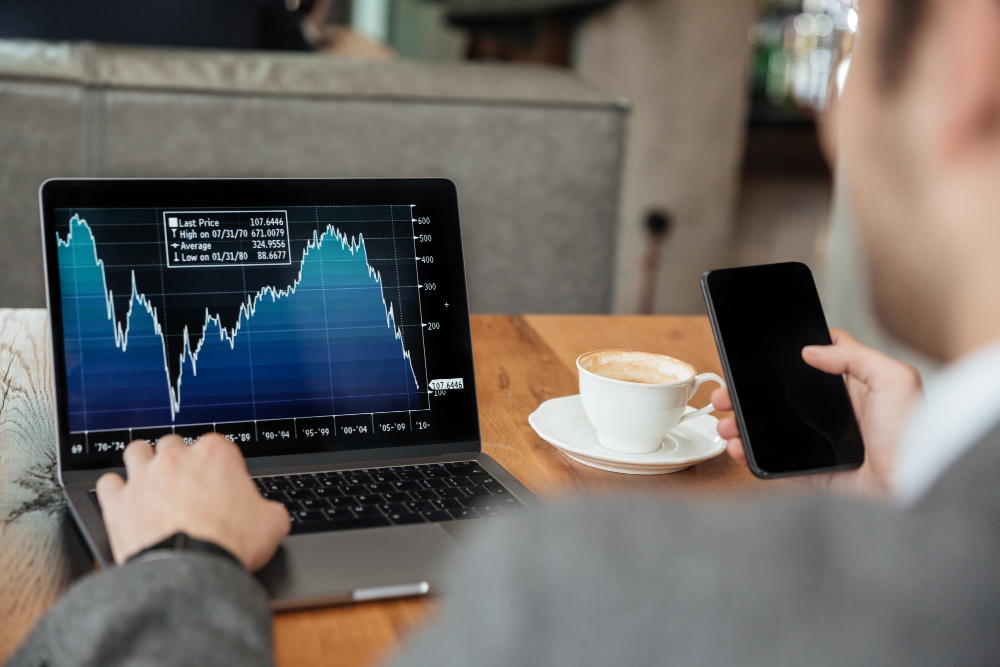The world of trading is highly unpredictable and fast-paced. That’s why being the master of emotions is a rare skill if you want to be profitable and calm whenever you execute trades. An impulsive decision based on a market movement can slip away your gains.
Reliable trading signals are hard to come by. But when you find the most accurate and trusted one that lets you sleep like a log at night, you better take hold of that and keep it. With trading signals, you could quickly identify opportunities without constantly monitoring the markets.
Unlike conventional discussions on the search results, this article discusses the synergy between advanced technology, such as trading signal platforms and tools, and the trader’s mindset, offering a unique perspective on harnessing trading signals effectively.
But as a refresher, let’s have an overview of what trading signals are.
What are trading signals?
Trading signals are actionable insights derived from different analytical methods that guide you on when to buy or sell assets. They serve as alerts or recommendations based on predefined criteria, helping you make informed decisions.
Trading signals include technical analysis indicators, which analyse price patterns and trends; fundamental analysis signals, based on economic data and company performance; and sentiment-based signals, which assess market mood through news and social media.
These signals enhance trading accuracy by providing data-driven insights. They help you capitalise on market opportunities while minimising emotional interference in decision-making. They can be used as stock trading signals, forex trading signals, ETF signals or even crypto signals.
Perhaps that’s a refresher for you if you’re a seasoned trader, but what if you already rely on trading signals but have inconsistent results? The following section will explain the psychological factors that make being a profitable trader more than just a skill set and years of experience.
What are the psychological aspects of using trading signals?
Too much reliance on signals without a verified mechanical system will take you on a rollercoaster ride, turning you into a worried, flappable trader or active investor.
Understand that there are psychological aspects of trading that involve several mental and emotional considerations:
- Overconfidence bias. You may become overconfident in the reliability of signals, leading you to take larger positions or ignore other important factors. This situation can result in poor risk management and potential losses.
- Emotional detachment. Trading signals remove some emotional decision-making from trading, allowing for more rational and disciplined trade execution. This is a big positive.
- Dependency. There’s a risk of becoming overly reliant on signals and overlooking mindset change, which can be detrimental in the long run.
You can experiment and do it yourself and trade with a trading signal platform—but having a solid system in place, like community support, a verified mechanical system, and a 360-degree change of trader mindset, will tremendously change how you trade and see trading.
For example, one of our members, David, who took the 4-Week PROCESS + MINDSET Training Intensive, shared that he struggled with fear and hesitated to invest his capital, focusing too much on protecting his assets rather than growing them. The course highlighted the importance of staying committed to a systematic approach, emphasising long-term consistency over short-term wins or losses.
David recognised the psychological aspects of trading as crucial, understanding that a successful trading mindset is as important as following a system.
Share Wealth Systems’ program prompted him to reassess his strategies, encouraging intentional learning and focus. He gleaned key insights, such as the necessity of mindset in trading and the value of systematic, repetitive learning to reinforce concepts.
How do you use a trading signals app to be profitable?
There are plenty of trading signal apps out there. But if you want one that will make you a peaceful, happy trader—day in and day out—you may want to consider our SPA3 Investor system.
SPA3 Investor is a mechanical trading system designed as a crucial component of the Skills Acquisition Process (SAP), aimed at helping you develop disciplined trading habits. Its primary function is to systematically manage investments.
Here’s how it works and the tools it employs:
1. Skills Acquisition Process (SAP) Role
SPA3 Investor is integral to SAP by providing a structured learning and practising trading method. It encourages you to start with a small portion of your investable capital—around 10%—to minimise emotional biases while gaining essential trading experience.
2. Decision-Making through Trade Signals
The system operates on predefined rules for buying and selling. It helps you avoid emotional decision-making, which is important for maintaining a steady trading approach.
Key Tools of SPA3 Investor
- Beyond Charts
- This technical analysis software scans a predefined universe of stocks to identify systematic Buy signals. It simplifies the data analysis process by providing visual insights into stock trends and potential investment opportunities.
- Beyond Charts helps you quickly evaluate potential trades, ensuring that decisions are based on objective data rather than market noise.
- SWS Alerts App
- The Alerts App is a mobile tool that sends instant notifications for Buy and Sell signals. This app ensures you stay updated with actionable information without being tied to a desk.
- Providing timely alerts allows you to prepare and execute trades efficiently, which is vital for maintaining a portfolio aligned with your investment strategy.
What are the benefits of using SPA3 investor tools?
- Structured trading approach. The combination of Beyond Charts and the SWS Alerts App fosters a disciplined trading environment where decisions are driven by data and system-generated signals rather than emotions.
- Time efficiency. These tools streamline the trading process by reducing the time spent analysing data and making decisions. It lets you focus on strategy execution.
- Enhanced decision-making. By consistently following the trading signals these tools provide, you can minimise mistakes and improve your overall performance in the market.
The SPA3 Investor system, with its holistic tools, empowers you to maintain a calm and confident trading approach, ultimately contributing to your growth (and well-being) as an unflappable trader.
Remember to follow a structured approach to acquire trading skills and confidence, beginning with smaller, lower-risk investments.
How to choose credible trading signal providers
Selecting a trustworthy trading signal provider can significantly bolster your trading strategy.
Here’s how you can evaluate and choose reliable providers.
The vetting process for providers
- Research the Provider’s Background
- Start by digging into the provider’s history and market expertise. Gather details about when they were founded, their years in operation, and their reputation within the trading community.
- Check Their Track Record
- Look for a proven track record of consistent performance. Request to see their historical data to verify the past success rates of their signals.
- Ensure Transparency
- Determine how transparent the provider is about their trading methodologies. They should clearly explain how they generate signals and the strategies they use.
- Read Customer Reviews and Testimonials
- Seek out feedback from existing users. This can give you insight into their satisfaction and reliability. Pay attention to both the positive and negative reviews for a balanced understanding.
- Test Their Signals
- Consider using a trial period or demo account to test their signals yourself. This firsthand experience can help you assess the reliability and accuracy of their recommendations.
Criteria for Choosing Reliable Signal Providers
- Assess the Quality of Signals
- Evaluate the quality of the signals they provide. High-quality signals should be timely, actionable, and based on comprehensive market analysis.
- Consistency of Signals
- Ensure the provider offers consistent signals without significant gaps to maintain reliable trading decisions.
- Understand Their Methodology
- Gain a clear understanding of their methodologies, including the technical indicators, market conditions, or algorithms they rely on.
- Evaluate Cost and Value
- Weigh the cost of their services against the value they provide. Ensure the fees are justified by their signals’ quality and success rate.
- Consider Risk Management
- A reliable provider should include insights into risk management strategies, helping you grasp the potential risks associated with their signals.
- Check Customer Support
- Assess the level of customer support available. Ensure they provide responsive support to address any questions or issues.
Importance of Due Diligence
- Verify Credibility and Reliability
- Conduct thorough due diligence to verify the provider’s credibility. Cross-reference information from multiple sources to ensure its trustworthiness.
- Trial and Assessment
- Before committing to a provider long-term, use trial periods to evaluate their services and ensure they align with your trading objectives.
By taking the time to thoroughly vet and select a credible trading signal provider, you can enhance your trading strategy, reduce risks, and boost your chances of success in the financial markets.
Be a calm and confident trader (and profitable) with accurate trading signals
In conclusion, mastering the art of trading involves technical prowess and emotional resilience. Reliable trading signals are vital in becoming a calm trader, enabling you to make informed decisions without succumbing to the whims of the market.
Leveraging the synergy between advanced technology, like SPA3 Investor, and a disciplined mindset can cultivate a more structured and efficient trading approach. Embrace continuous learning and the psychological elements of trading and explore the complexities of the market confidently.
Choosing credible trading signal providers is key to reinforcing your strategy and boosting your success. Apply these insights to transform your trading experience into one unflappable and happy trader.



